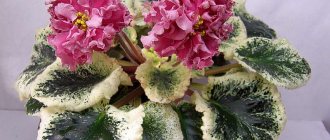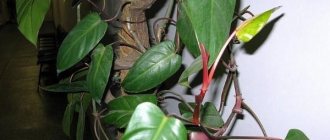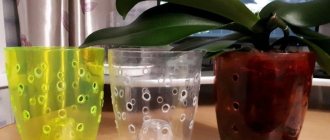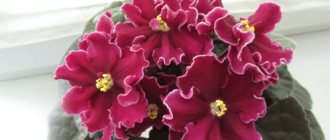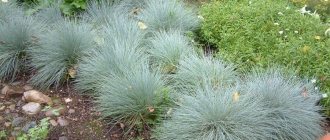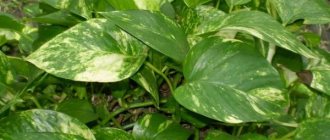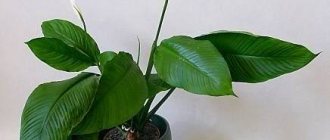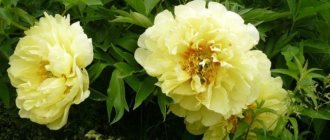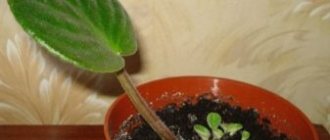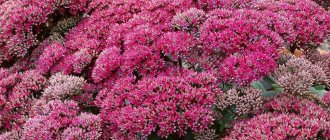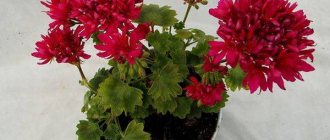Botanical description
Philodendron Xanadu is a perennial, exotic crop native to the Brazilian tropics. In its natural environment, the plant reaches an impressive height (up to 4 m). At home, the compact bush grows no more than 1 m. Large, heavily dissected leaves with white veins add attractiveness to the plant.
In its natural environment, Philodendron Xanadu grows in the form of a shrub. However, if there is a shortage of soil, the plant will behave like a classic epiphyte, clinging to neighboring trees, shrubs and even stones with its aerial roots. This ability of a tropical perennial makes it resistant to any adverse conditions.
Features of planting and transplanting
Plant location
Philodendron is a shade-tolerant plant. But if there is insufficient lighting, the shoots will stretch, the leaves will become smaller, and varieties with variegated leaves will lose their color. Direct sunlight will also not be beneficial. The best option is to place the plant near the east window. If the windows face south, then it is better to hide the philodendron in the middle of the room.
Protect your philodendron from drafts!
The best place for the plant will be an east window
Landing rules
The new planting pot should be high enough and with a wide top, taking into account the fact that the aerial roots of philodendron can take root 5–7 cm higher than the previous one. Too large a pot can cause waterlogging of the soil, which is undesirable. Be sure to have drainage holes.
A tall pot is suitable for philodendron
In nature, philodendrons grow in soils that contain fallen leaves and rotted wood. When buying an earthen mixture in a store, you should opt for light soil for Saintpaulia. The main requirement for soil is good water and breathability. If you decide to make the mixture yourself, you will need:
- 3 parts garden soil;
- 2 parts peat;
- 4 parts orchid bark;
- 1 part perlite.
There is another option that includes:
- 1 part of turf land;
- 3 parts leaf;
- 1 part sand.
You can add horn shavings or bone meal to the soil mixture, which will make the soil more nutritious.
The finished mixture should be light and loose, easily permeable to water, with neutral or weak acidity pH 5.5–7.
Don't forget to prepare the support. You can buy it in a store, or you can make it yourself. For small plants, it is better to make a frame from rigid wire or install a trellis. For more impressive specimens, take a wooden stick, branch or piece of plastic pipe and wrap it with fibrous material or sphagnum moss. A philodendron climbing along a support will take up little space in the apartment.
The support must be kept damp. During the period of active growth, it is sprayed with highly diluted fertilizers.
Features of transplantation
Adult plants are replanted every 2–3 years, and young plants - annually. For specimens that are too large, you can renew the top layer of soil without replanting. To do this, remove 5 cm of the old soil and replace it with new one.
For large specimens, it is enough to annually change the top layer of soil to a new one
The best time to transplant philodendron is spring.
Transplantation is carried out in the following cases:
- The soil becomes compacted or covered with moss.
- Roots grow through drainage holes or leaves become smaller, indicating a cramped pot.
- Minerals accumulate excessively, appearing as white streaks on the soil.
- The presence of pests or signs of philodendron disease in the soil is observed. In this case, it is necessary to remove the old soil and cut off the diseased roots.
When replanting, do not forget to disinfect the soil by dousing it with boiling water or roasting it in the oven.
The plant should be replanted immediately after purchase.
Step by step transplant process:
- Place a layer of drainage into the prepared pot.
- Add a layer of soil on top.
- Carefully remove the philodendron from the old pot, trying to preserve the earthen lump and not disturb the roots.
- Place the plant in the center of the new pot along with its support. If you stick it in after planting, you can damage the roots.
- Add soil from all sides, then spill it with water. The soil will settle and fill all the voids. Add the remaining soil and water again.
- When planting, do not bury the root collar.
If you bought a philodendron in a store, then when you get home, carefully remove the plant from the pot and inspect the root system. If the roots have completely entwined the earthen ball, then replanting is necessary.
Philodendron transplantation using the transshipment method - video
Cost, where to buy
You can purchase spectacular culture in specialized and online stores. In addition, it is possible to buy a plant or exchange it for another on the forums of amateur gardeners.
The price of a one-year-old specimen is about 400-500 rubles, and an adult (large) one reaches several thousand rubles.
Attention! Most companies specializing in the sale of indoor flowers via the Internet deliver goods to all parts of our country. The goods can be paid for by bank transfer or, after receiving the parcel, by cash on delivery.
Philodendron "Blushing" (erubescens)
The Blushing Philodendron plant (erubescens) grows up to 2 m in height, has arrow-shaped leaves of a dark green color, and the petioles of the leaves are dark-light in color. The trunk of the plant is red-green, but when it becomes woody, it changes to a gray-golden color. The presented species has aerial roots, which must be carefully tucked into damp moss. To attach the roots, you should use a curved wire so that the roots are not damaged during growth.
This type of flower will also tolerate a long absence of water. However, it is important to spray it frequently. Loves shade and does not tolerate drafts, feels good at a temperature of 13 ºC. In general, the “Blushing” philodendron requires care similar to any other plants presented in the article above.
Xanadu varieties and photos
Based on the philodendron with the mysterious name Xanadu, a whole series of related plants has been bred. Each of them is attractive in its own way, because it has a special form of development and coloring of the leaf plates.
Gold
Philodendron Golden fully lives up to its name - the crown is painted in a yellow tint. Large, curly leaves are dissected into 15-20 “fingers”.
Under ideal conditions, the plant forms a dense crown.
Sun
The lush, bright green San Philodendron bush is formed by massive, pinnately dissected leaves located on long petioles.
Young seedlings look less decorative. Their leaf blades are slightly dissected and have a less saturated color.
Micans
An original plant with velvety heart-shaped leaves that changes color depending on the brightness of the light.
The long, fragile stem needs support. However, this becomes optional if Philodendron Mikans is grown as a hanging crop.
Popular varieties
Most often, gardeners plant the following varieties:
Philodendron Scandance
Philodendron Sello, guitar-shaped, Xanadu, lobed
It is a climbing plant with flexible stems that thrive in shade and partial shade. The liana-shaped shoots are densely covered with heart-shaped leaves, each about 6-12 cm long. Their surface is glossy and smooth.
Philodendron Atom
A very whimsical variety. The stem of the specimen is short and erect. The leaves resemble a palm with five branches, the edges are wavy. The color is bright green, the texture is smooth, so the foliage has a glossy surface.
Philodendron Jellyfish
It is a subspecies of the blushing philodendron. The leaves are dense with a yellowish tint. This color contrasts unusually with the red stems and veins of the leaf itself.
Note! Jellyfish is easy to care for, but the need for increased lighting can sometimes become a problem, so you will have to install special lamps for lighting.
Philodendron Burle Marx variegata
It is a ball of leaves with a spectacularly branching stem. The leaves are bright green with a glossy base. The variety is unpretentious, grows quickly and reproduces easily. Perfectly fills the interior of the room with its size.
Philodendron Cobra
This is a vine whose stem spreads and forms a small reclining bush. The leaves are dark green in color, but there are white stripes 10-20 mm long on the surface. They reach a length of 16-25 cm. The name is derived from the similar shape of the trunk, reminiscent of the stance of a cobra.
Philodendron Imperial Red
It is a small bush in which the stems are shortened and the leaves grow from a single rosette. The crown is represented by heart-shaped specimens that have a pronounced red-burgundy color. The variety is classified as a type of indoor plant with a spectacular texture.
Imperial Red
Philodendron Jungle Boogie
This is a semi-epiphyte that has a woody stem with a dense structure. The crown is oval in shape with numerous cuts ending in sharp tips. The color is dark green.
Philodendron Minarum
This is an indoor representative, not very large in size. The above-ground part is represented by raised or figured leaves of bright green color.
Philodendron Lacerum
A beautiful and unusual plant. Its leaves grow directly from the ground. The plate is divided into sectors by small cuts, so the flower has a popular name - incised.
Lacerum in a pot
Philodendron Imperial Green
A small bush on the stem of which the leaves form small rosettes. The shape resembles an oval, the structure is dense, there is a glossy shine. Ideal for planting on a windowsill or in a small room.
Philodendron Red Emerald
It belongs to the blushing species and is a powerful plant with oblong leaf plates, along which there are small cuts for dividing into sectors.
Philodendron Mediopicta
Belongs to the cape-shaped variety. The color of the shoots resembles amber, which shimmers in the sun from yellow to dark green. Over time, this feature disappears. It is because of this that the second name came about - Philodendron natka sun.
Philodendron Silver Queen
A small tree-like trunk on which dense green leafy plates are located. There are no veins at all, so the appearance is elegant.
Original plant variety
Philodendron Burgundy
A woody, low stem, which is formed by medium-sized leaves (10-16 cm in length). The dark green texture with a red tint makes the plant unique in comparison with other varieties of this crop.
Philodendron White Wizard
It received this name because of the unusual tricolor that is present in the color of the aboveground part: yellowish, white and light green.
Philodendron Pink Princess
It is a small bush that has slightly reddish leaves and stems. Over time, the color becomes more uniform and acquires a pinkish tint.
Appearance of the Pink Princess
Philodendron Tortum
It is a bush with powerful shoots, which are represented by paws with 12-20 limbs. It is they who form the leaf, which consists of narrow plates.
Philodendron cordate
Takes the form of an ampelous plant if the crown is formed. The aboveground part has a rich green color. The leaf plates and stem are slightly pubescent, which improves tactile sensations.
Philodendron golden-black
A distinctive feature is the size of the sheet platinum. The leaf grows up to 80 cm and has an oblong shape with a sharp tip. The veins are yellow, and the base is emerald with a transition to red.
Beautiful appearance
Philodendron Giganteum variegata
The variegated version of the Giganteum variety resembles a water lily, which has spots of white and yellow flowers along the entire perimeter of the plate. Outwardly it resembles a small bush. The original color is a distinctive feature of the presented specimen.
Philodendron White Knight
The plant resembles a vine, along the perimeter of which there are leaves more than 2 mm thick. The plate has an emerald color with a minimal amount of white spots along their perimeter. The length of the climbing stem can reach several meters.
Philodendron Mamey
The indoor version of philodendron is a plant with an original leaf shape. During the growing season, flowering occurs, which is a rosette with several buds.
Philodendron Cruentum
The glossy effect produced by the leaf blade and the small size of the bush-like plant delight many experienced gardeners. The leaves are green above and purple below.
Philodendron Andre
Each leaf is about 6 cm long. The liana has a very fragile stem that is not flexible. Effectiveness lies only in color.
Andre's unconventional look
Philodendron Tripartite
A rare variety whose aerial part is a bush. The stems come straight out of the ground and bear leaves with three divisions right down to the base. This is where the name of the species comes from.
Domestic and wild Philodendron differ only in the size of the aerial parts and leaf blades. There are many species and varieties of plants in nature, and even more selective specimens. Due to the diversity of appearance and size, flower growers use this plant option for interior decoration.
Home care
For a good growing season, a tropical crop needs a long day of light (at least 10-12 hours). At the same time, Philodendron Xanadu cannot tolerate exposure to direct rays of the sun, as they cause leaf burn. The plant will be comfortable if it is placed on a windowsill facing the east or west side of the house.
Twice a month, with an interval of 2 weeks, the flower is fed with special complex fertilizers containing microelements.
In the off-season, the air temperature comfortable for the crop should fluctuate between 18-20 °C. In summer and winter, this indicator changes to 21-27 °C and 15-16 °C, respectively.
Important! The heat-loving plant needs high air humidity, especially in the summer heat. Spraying with water at room temperature is necessary for philodendron throughout the growing season. During winter dormancy, this procedure is no longer necessary.
Transfer
It is advisable to replant young plants up to 3-5 years old into fresh substrate every year at the beginning of the new season. Adult plants undergo this procedure much less frequently - once every 2-3 years. If an urgent need arises, the transplant can be carried out at any time.
Reproduction
Layerings and cuttings
Like most philodendrons, Xanadu is easy to propagate by air layering and green cuttings.
For propagation, it is enough to bury the stem with aerial roots into the ground. Or put a cutting with a “heel” and 2-3 dormant buds in water (planted in moist soil).
To speed up the process, seedlings are treated with any growth stimulant (Epin, Kornevin, etc.). Film shelter, which creates a greenhouse microclimate, has a good effect.
Leaf
Rooting of philodendron with a leaf plate occurs according to the standard scheme. In order for this fragment of the plant to grow roots faster, it is separated from the trunk along with a piece of the stem (“heel”).
The cut site is treated with a growth stimulator and only then placed in water or planted in moist soil. Under favorable conditions, after 2-3 weeks, young roots form on the leaf blade.
Reference! In the natural environment, the plant reproduces by self-sowing (seeds). At home, this rooting method is useless, because Philodendron Xanadu almost never blooms in indoor conditions. In addition, insects are needed for proper pollination.
Philodendron care
As already mentioned, philodendron is an easy plant to care for.
Place for philodendron in the house
Well lit with shading from the hot midday rays.
Temperature for Philodendron
Philodendron is suitable for indoor conditions, temperature +15....+30 degrees. In winter - not lower than +12 °C.
Humidification mode for philodendrons
Philodendrons are moisture-loving plants: from spring to autumn they are watered abundantly, in winter - moderately. Regular spraying is advisable.
A pot with philodendron MUST contain drainage and drainage holes! Excess water must be removed.
Replanting Philodendrons
In the spring, once every two years, in a light, well-drained substrate . Large specimens are rarely replanted; you can limit yourself to replacing the top layer of soil.
Diseases and pests
The main reason for the development of plant diseases is improper maintenance conditions or illiterate care. To protect the plant from dangerous infections, it is necessary to comply with the requirements of agricultural technology.
Violation of water and temperature conditions, cold drafts and dry air are the main prerequisites for the development of diseases. And malicious pests - aphids, spider mites, thrips and scale insects primarily damage weakened plants.
Plants, like all living organisms, need careful care. With a minimal investment of time and effort, you can create comfortable conditions for an indoor flower that will preserve its decorative properties for many years.
Philodendron "Climbing" in your home
A beautiful, evergreen climbing plant with heart-shaped leaves is entwined with secrets and signs. There is a belief that this particular species is unacceptable to plant at home. Whether this is prejudice or not is up to you to decide. Like any other species from the Araceae family, the “Climbing” philodendron in your home does not pose a threat to humans if you care for it properly and wear gloves when pruning.
This flower grows up to 90 cm per year, and the leaves reach up to 10 cm in length. The leaves have a dark green color and a shiny surface. They will maintain a beautiful and healthy appearance in shaded places, at a temperature not lower than 18 ºC. It is unpretentious, but requires timely spraying, annual replanting, and old leaves must be removed every spring.
Want to reproduce? For this procedure, you should choose a warm season. Propagated by cuttings, the cutting must have 2 leaves. After cutting, place the cuttings in a jar and wait for the flower to take root.
Therefore, is it possible to keep climbing philodendron at home or in the garden? The answer is obvious - with such a flower you can create stunning decorations.
Ornamental plant philodendron "Atom"
The most difficult to care for of all the species presented is the Atom philodendron or the compact variety Sello. The ornamental plant has a bright green color and a glossy shine; five-lobed leaves are the main distinguishing features of this species. Very sensitive to the environment, so it is important to provide high humidity levels. Otherwise, the plant dies. It is also important to water the plant constantly, but reduce the amount of watering in the fall. In this case, the water must be settled or boiled. Otherwise, they are as unpretentious as other types of philodendrons described above.
At the initial stages of growth, the trunk is slightly inclined and has aerial roots. It is important to remember that roots are very sensitive to water. Therefore, in search of her, they can easily travel several meters, for example, to an aquarium.
